UPDATE! It appears that Polaris is no longer working with the manufacturer who designed and built these electric bikes, but that company is now selling their own line as PIM (Power in Motion) and you can connect with them through their official website at www.pimbicycles.com to possibly get replacement batteries, chargers, and other hardware. The following review stands on its own and represents the Polaris bike as I experienced it at the time.
The Polaris Course is part of the second generation of Polaris branded electric bikes that use Evantage drive systems. This ebike is very custom – from the frame to the motor and even the drive modes which offer regeneration and a fancy cadence and gear sensor called BioSync. The Course is a speed commuter (meaning it can reach ~25 mph in pedal assist vs. just 20 like its cousin the Polaris Rail). Both of these “commuter” ebikes offers the same powerful 750 watt hub motor and 44 volt battery pack as the higher end Polaris bikes. Overall, this electric bike is relatively quiet, well balanced and comes with a solid two year warranty on the motor, battery and electronic systems with lifetime coverage on the frame. I’m not sure whether it comes with fenders and a rear rack (as pictured) but the demo unit I tried did not have them included. These accessories can easily be added after-market to make commuting even easier and safer.
Driving this bike is an impressive 750 watt gearless direct drive hub motor located in the rear. Its peak output is actually closer to 1,000 watts which is incredible but that’s not the whole story… Being gearless, the higher wattage sort of makes up for mechanical advantages that a geared hub or mid-drive motor could offer. One advantage is that this hub is a bit quieter (though it still whirs at lower speeds when climbing). Another benefit is toughness, there are no gears inside making contact with each other, just magnets repelling. The real benefit here is that you can use those magnets to recoup energy with regenerative braking and there are two modes to choose from. This helps to extend range and means you can get away with a smaller, relatively lighter wight battery pack.
The battery powering the Course offer a solid 44 volts of power with smaller 6 amp hours of capacity. It uses light weight, long lasting Lithium Manganese cells and can be charged on or off the bike. They’ve designed the pack to fit right into the downtube on this model and it’s actually interchangeable with other second generation Polaris ebikes. You can even get a second pack to extend your range or balance charging when commuting (one at home, one at the office) but they cost a pretty penny at ~$700. The Course comes in two frame types including high step EV502 and low step EV512 and both feel relatively stiff even with the cutaway tubing for the battery mount. As you can see, the downtube is very wide and sort of overbuilt. This makes the bike a bit heavier but adds strength and stiffness compared with some other models (especially comparing low-step frames).
Operating the Polaris Course electric bike systems is pretty straight forward. You charge the battery, press the power button on the display console and the bike activates. From here you can arrow up or down on the display to choose from 3 levels of assist or two levels of regen (perfect for coasting down hills or getting a workout). I’ve always been fascinated with regeneration modes on ebikes but the truth is, you don’t really get that much power back. The utility of the feature boils down to saving your wrists from squeezing the brakes constantly and offsetting some of the cogging and increased weight of a gearless motor. The handlebars and cockpit of this ebike are relatively straight forward with Magura brake levers on both sides and a trigger shifter on the right bar. You get eight speeds to pedal with and that’s solid for climbing or cruising but seems a bit limited for the higher speeds that this ebike is capable of. The BioSync cadence sensor can actually sense when you shift gears by measuring the cable that activates the rear derailleur. It uses this feedback along with the chain speed (measured by the chain guide cog speed that’s mounted just below the chain stay) to activate and de-activate the motor. It’s a unique system that helps the bike respond more naturally to the gear that the bike is being ridden in.
The 2015 line of Polaris ebikes received mixed feedback from most of the people I spoke with at Interbike 2014 (where I first saw it). People weren’t immediately satisfied with the slower speeds when riding in low gears but I think they missed the point. If you’re riding in a crowd and using a low gear, you don’t want speed. Also, if you’re climbing, it’s nice to have the motor focus on torque and power vs. speed. The Polaris system makes sense to me and even though it isn’t as powerful feeling at first or immediately satisfying as some other demos, I think in practice it could really work well. It’s still a bit expensive and heavy in my book but the suspension fork with lockout, padded saddle and adjustable stem pair nicely with the two frame styles and the warranty and quality reputation of Polaris is a strong pull. To be clear the Course and Rail are very similar ebikes and the $500 difference between the two goes towards a higher top speed, upgraded suspension fork (Suntour E45 vs. NEX), nicer derailleur (SRAM X7 vs. X5), hydraulic disc brakes vs. mechanical (Magura MT2E vs. Tektro Aquila), upgraded rims and nicer tires. You also get different color choices but no integrated bell. To me, that’s a pretty good upgrade and if the Course models do come with fenders and a rear rack, that’s even better!
Pros:
- BioSync cadence sensor can detect gear shifting using an internal pulley, it uses this information to provide slow torque in low “climbing” gears and high speed in high “fast” gears
- Reduced wear on brake pads and extended range thanks to regenerative braking, two levels of regen and automatic regen based on bike speed and chosen gear
- Suspension fork, ergonomic grips and adjustable angle stem provide versatility and comfort for a more upright or forward riding position
- Two frame styles (step-thru and high-step) offer easier mounting or stiffer frame qualities respectively
- Large 180 mm hydraulic disc brakes provide great stopping power and the integrated motor cutoff switch adds safety when using high speed pedal assist
- Battery pack is beautifully integrated into the frame for improved balance and protection, locking and removable for convenient charging or reduced weight of frame during transport (front wheel with quick release also helps)
- Gearless direct drive motor is fairly quiet compared with a geared hub but does hum a little bit in the low speed / high torque levels
- Compared with some of the other Polaris ebike frame designs, the battery pack on the Course is mounted lower which improves balance and handling
- Wires are hidden on the frame but remain accessible for doing maintenance, the display panel and motor have modular disconnects for easy service and replacement if necessary
Cons:
- Heavier than similar ebikes with geared motors vs. gearless but the weight is well balanced and you do get regen, frame is also stiffer
- Battery pack has relatively low watt hours and is very expensive to replace ~$700 though it can offer decent range thanks to the assist levels and regen options
- Less satisfying assist (varies output based on which gear you’re in) doesn’t provide that zippy feeling but does offer good torque for climbing and overall efficiency
Resources:
- Official Site: http://polarisebikes.com/bike_EV502.php and http://polarisebikes.com/bike_EV512.php
- Official Manual: polaris-ebike-manual.pdf
- More Pictures: https://goo.gl/photos/napxmnaQxNEp9SkUA


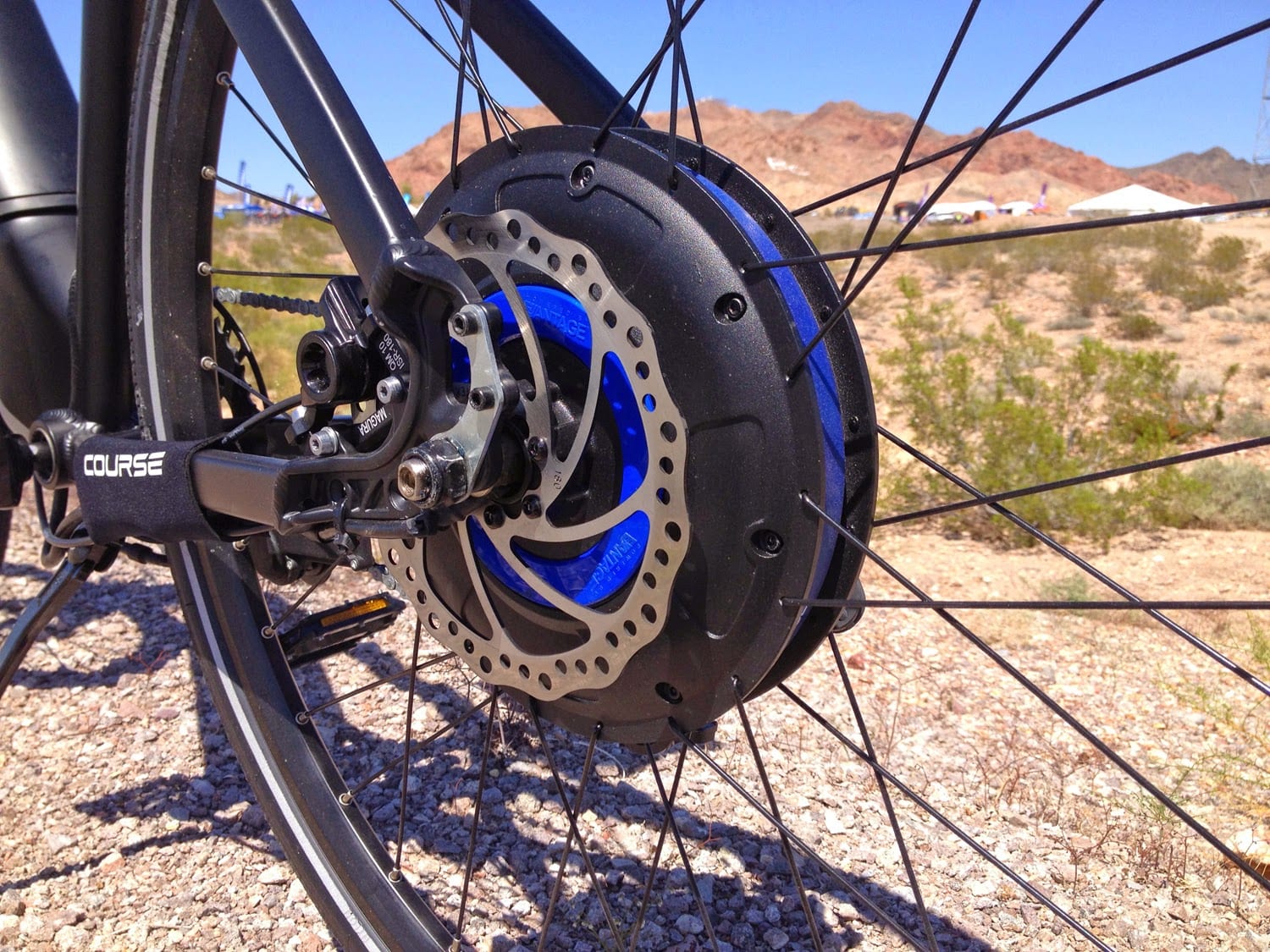
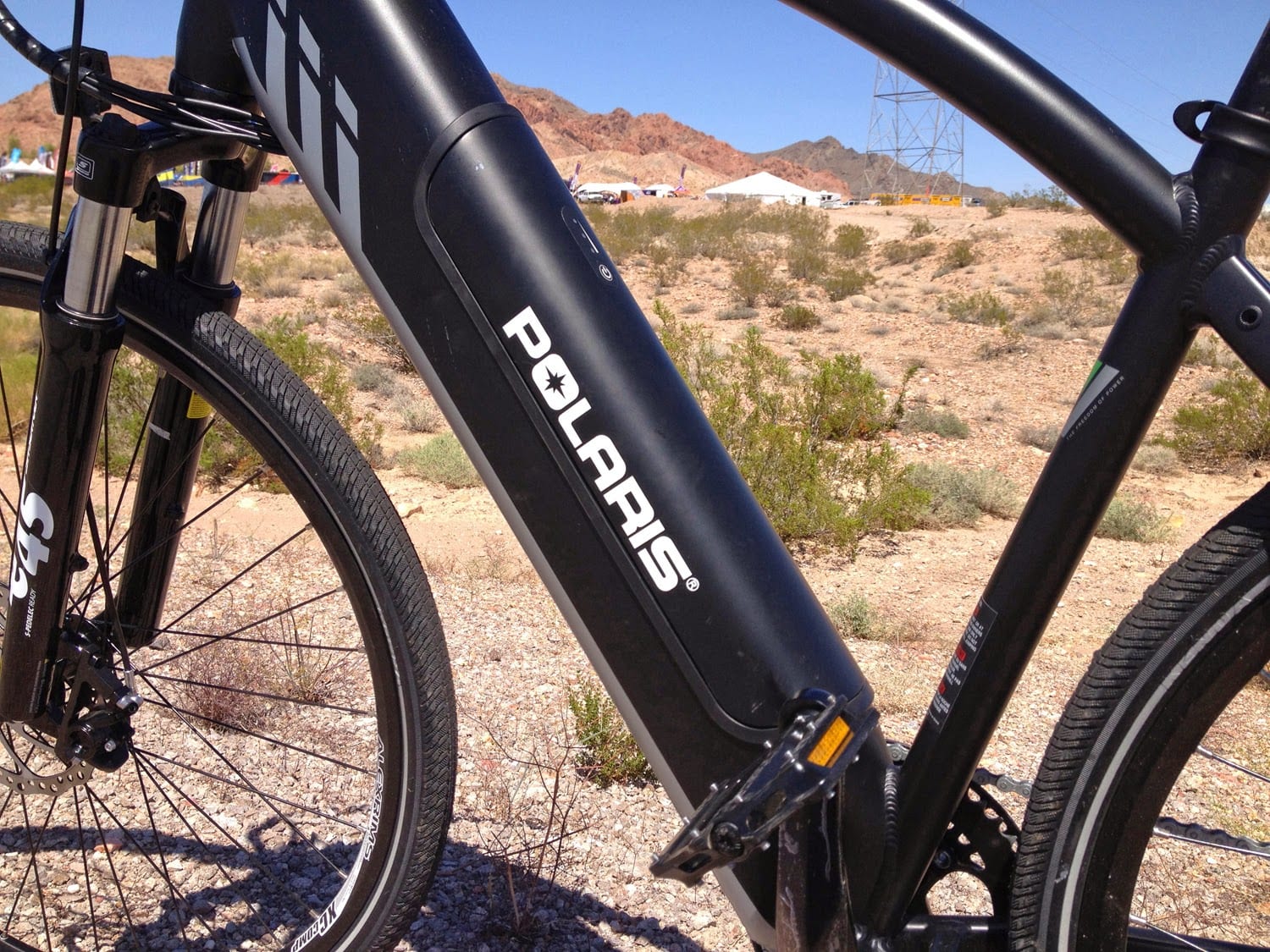

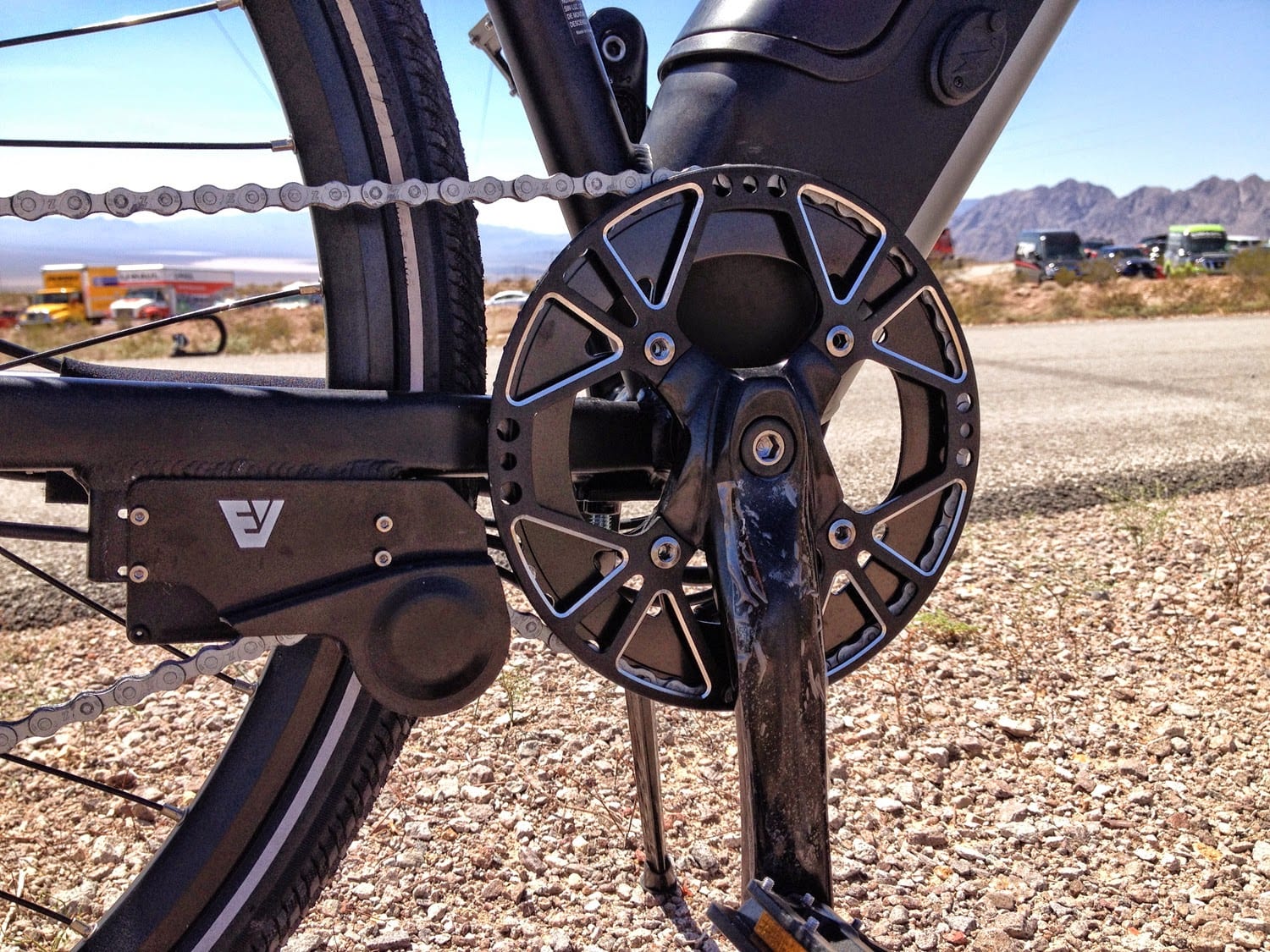
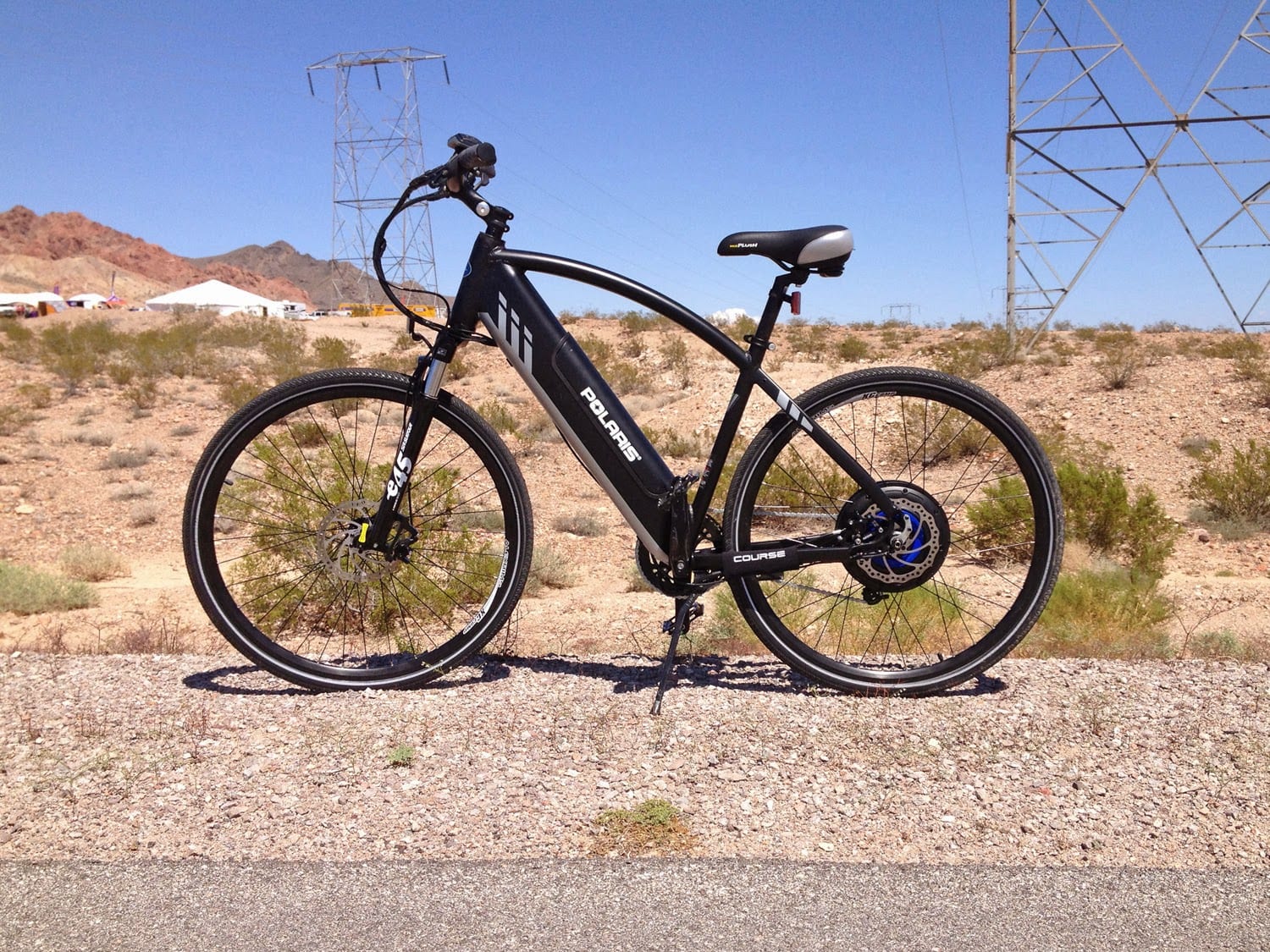
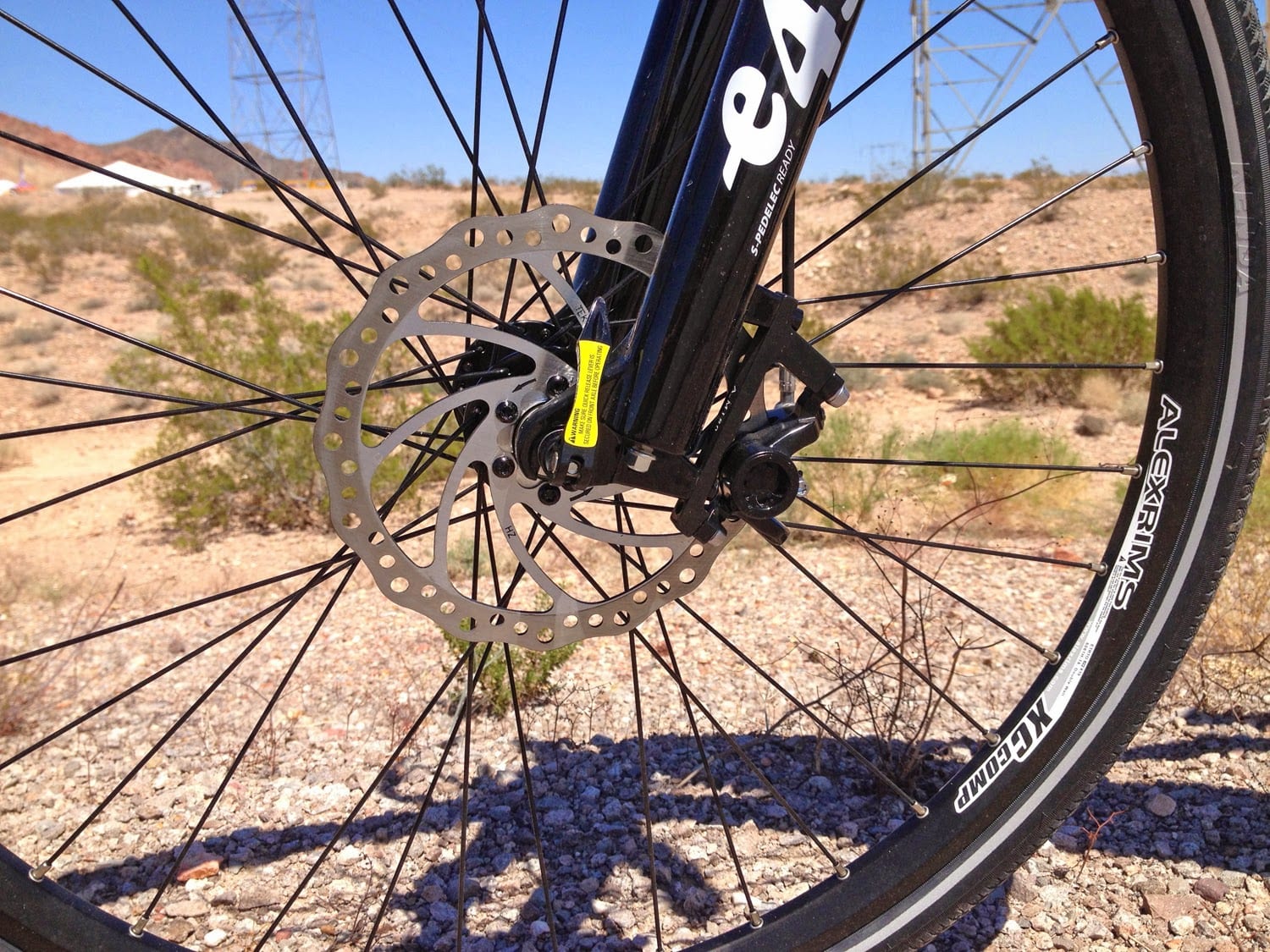
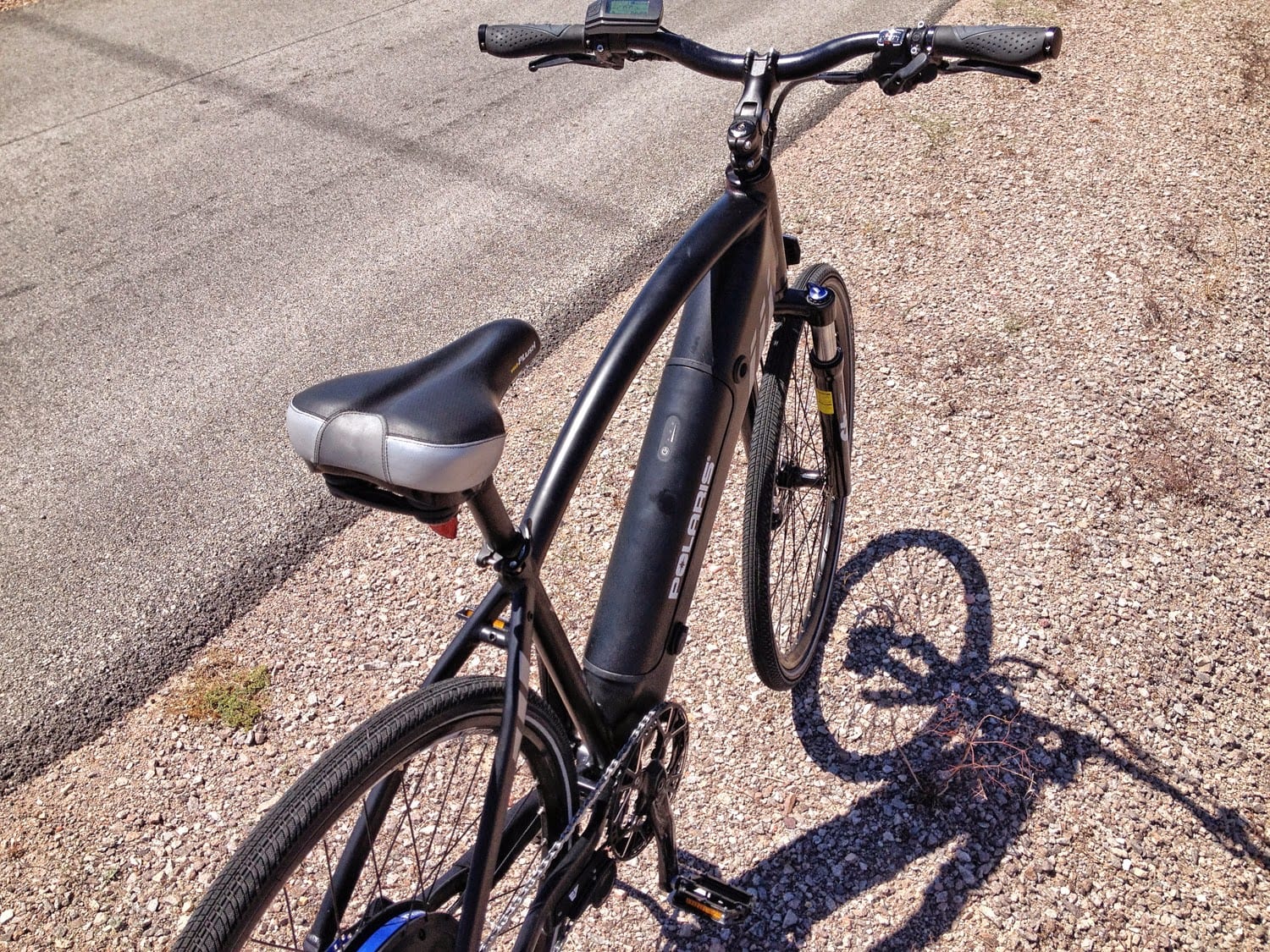
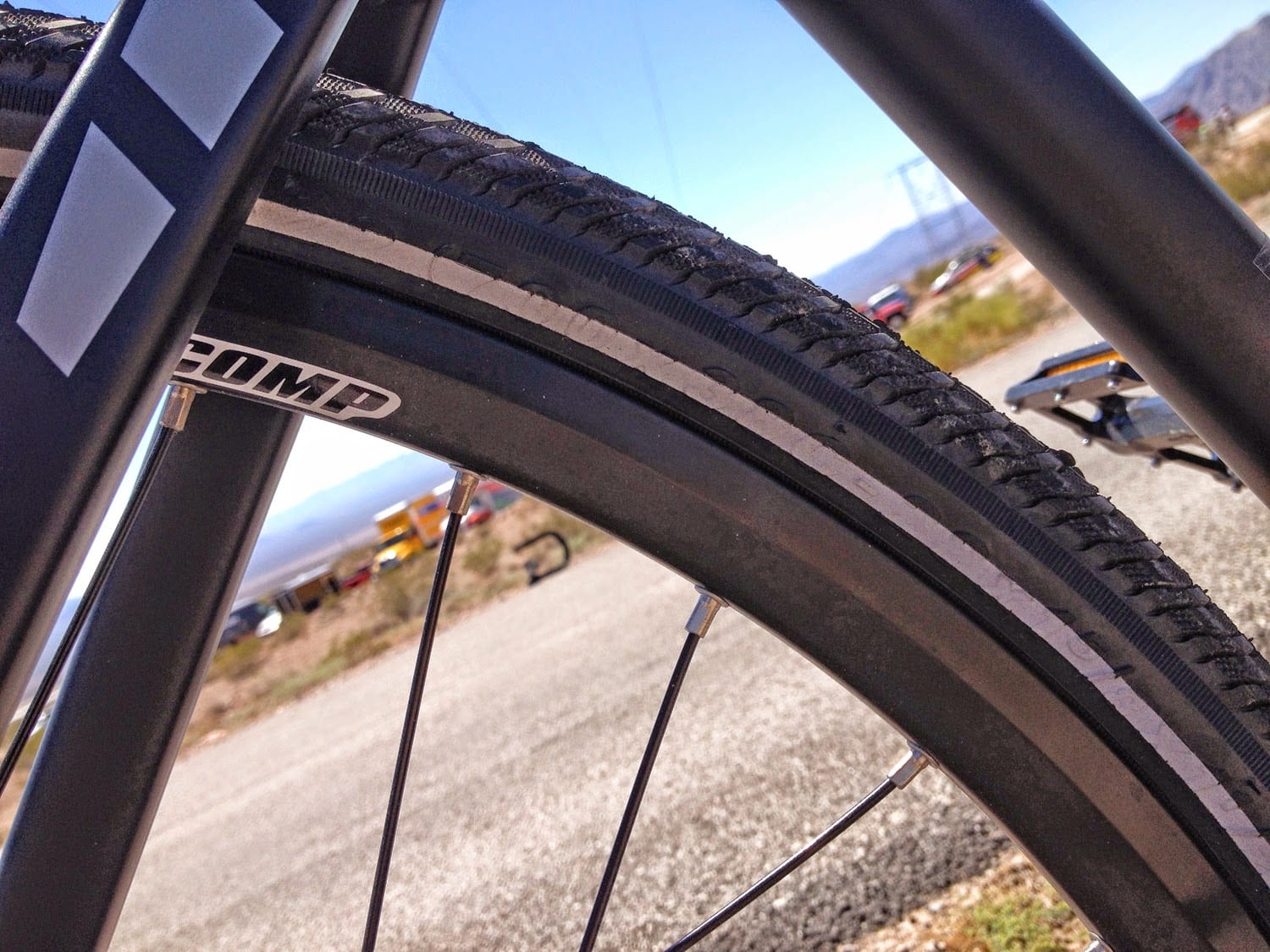
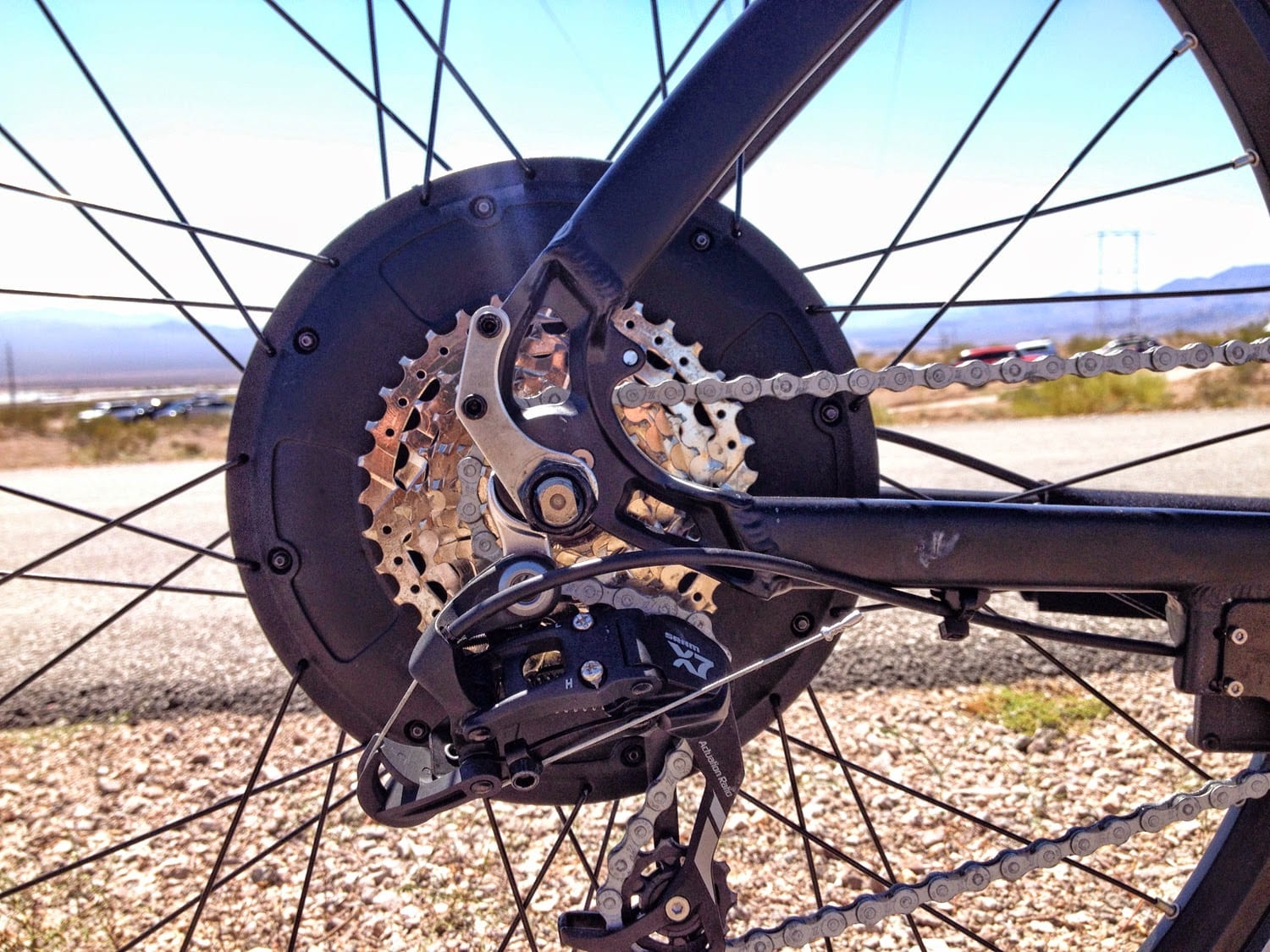
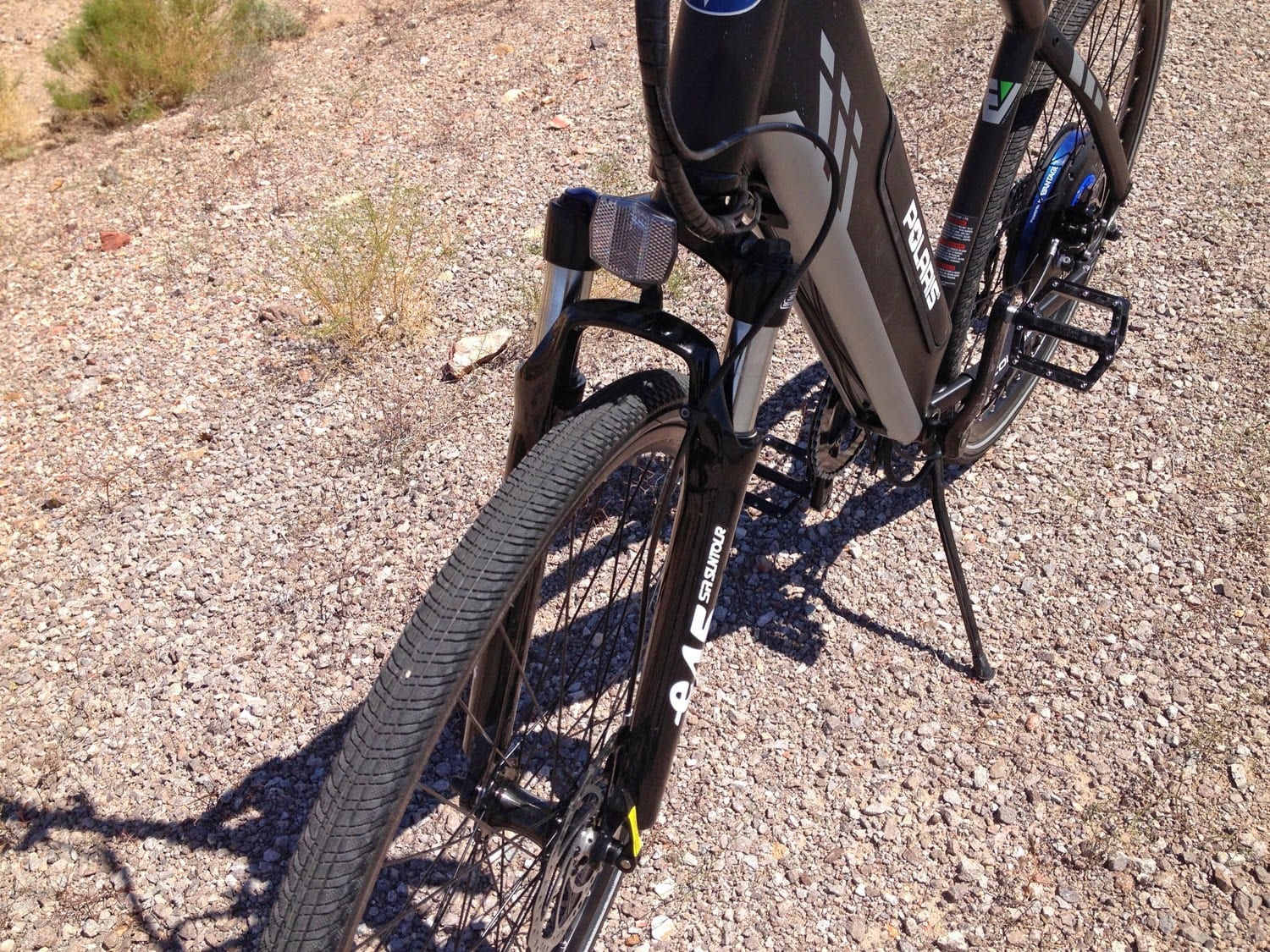
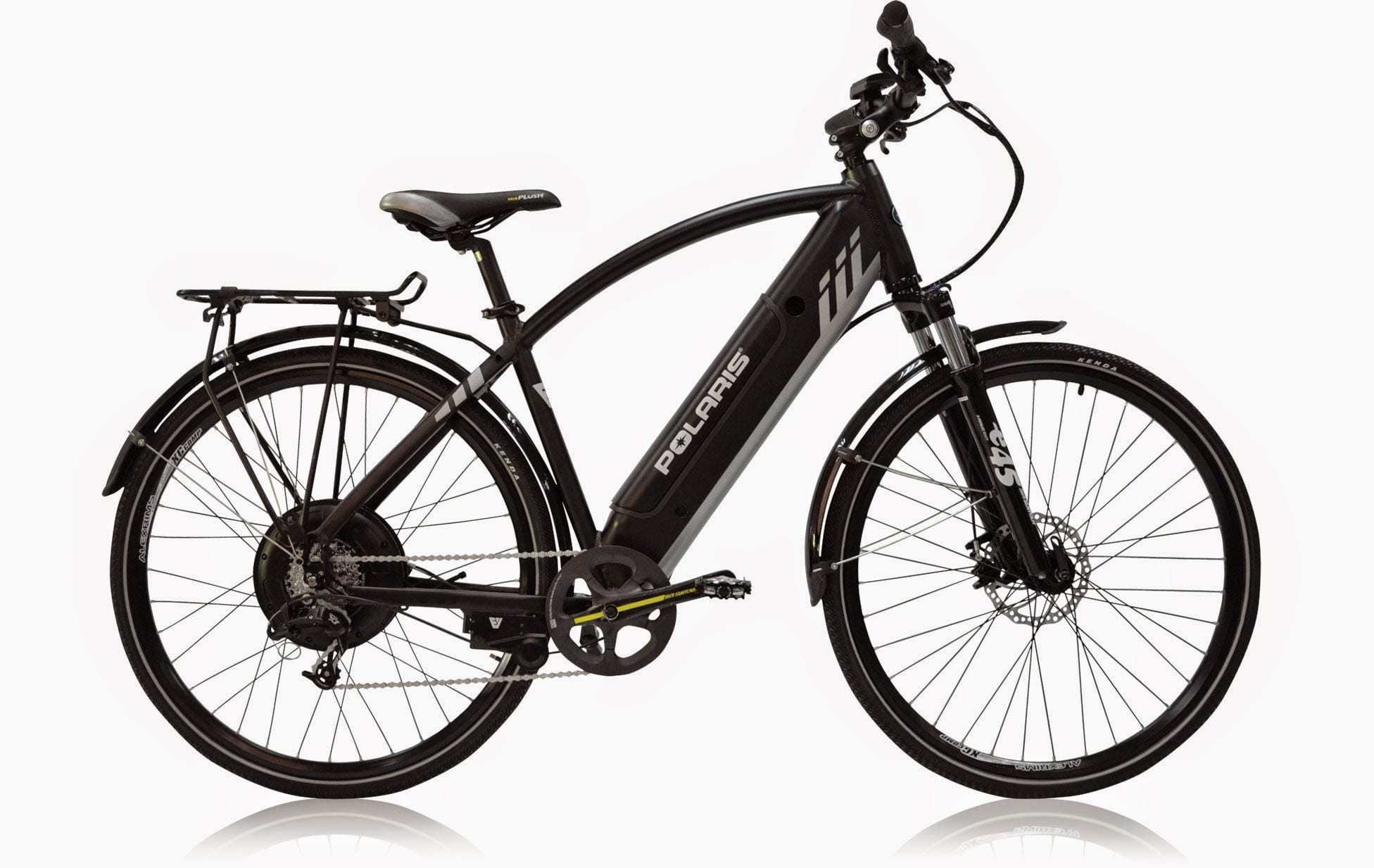
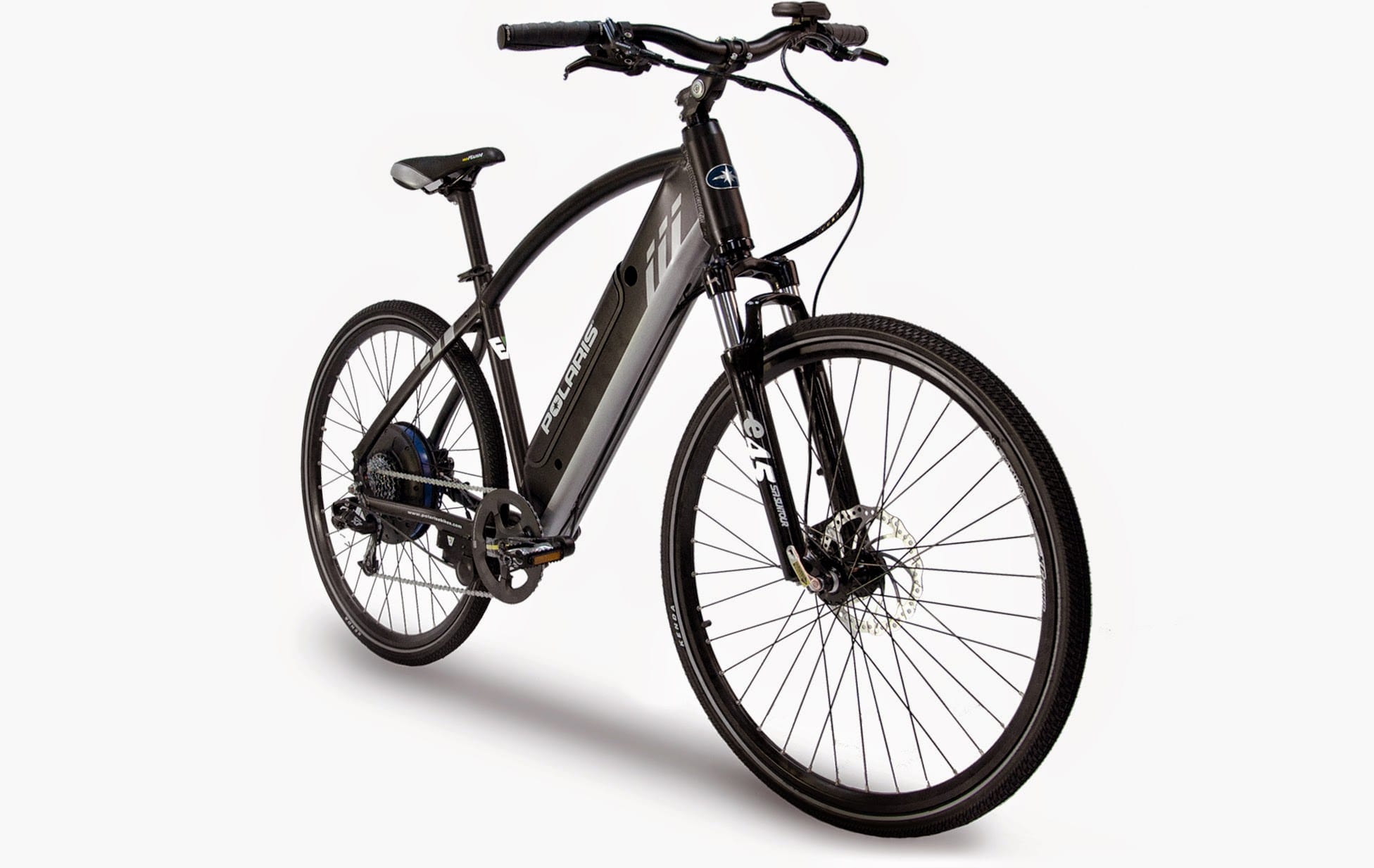
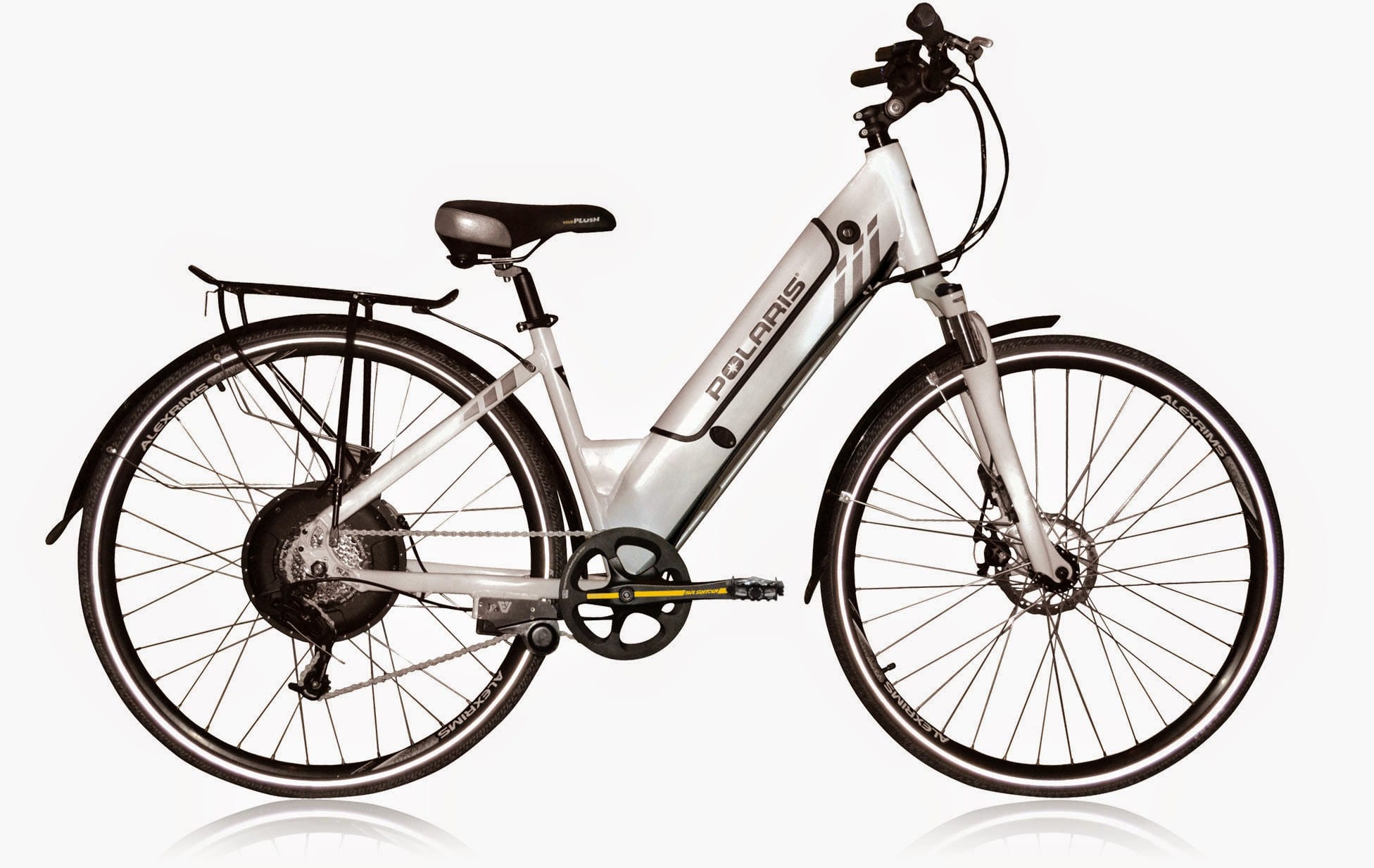
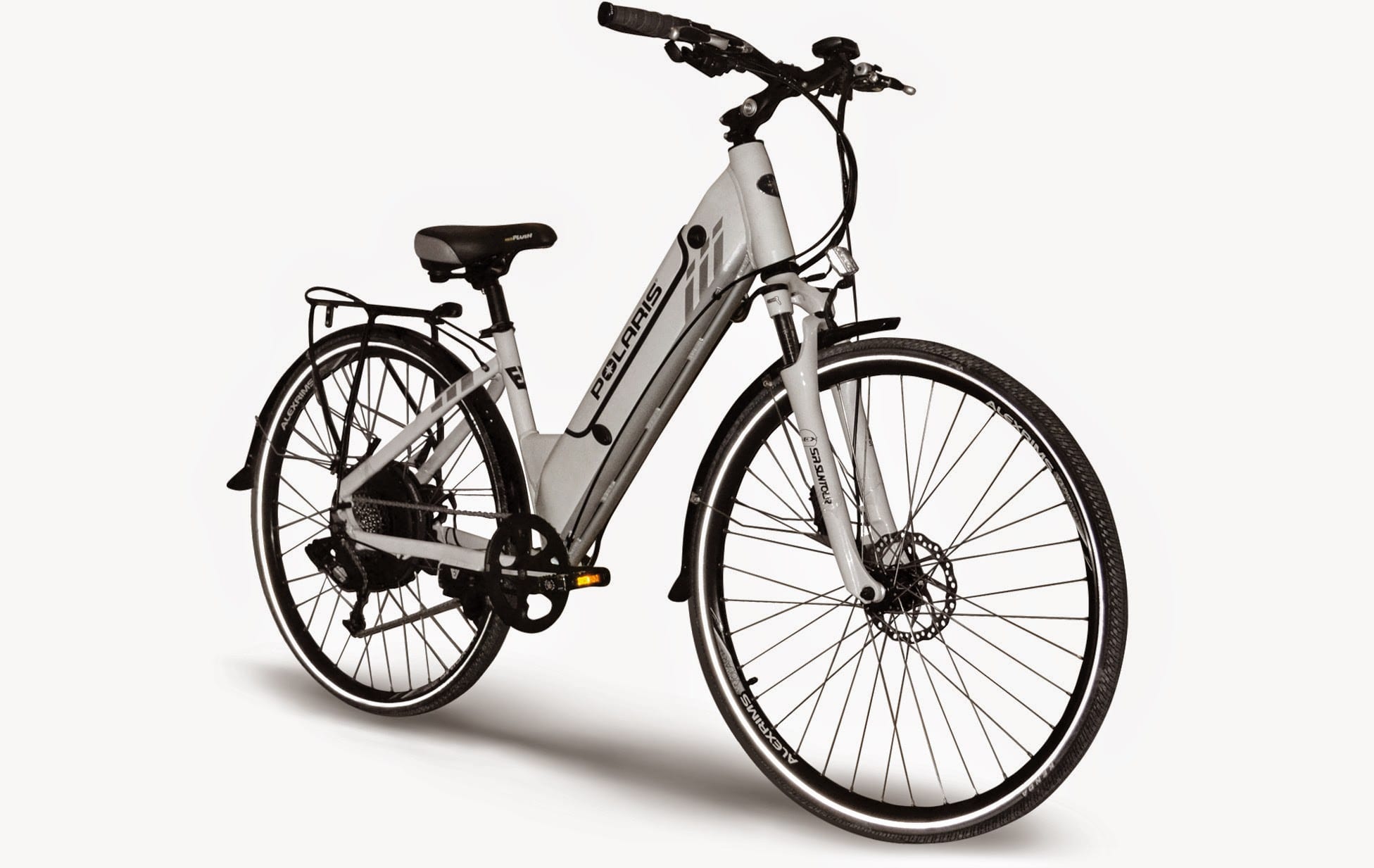

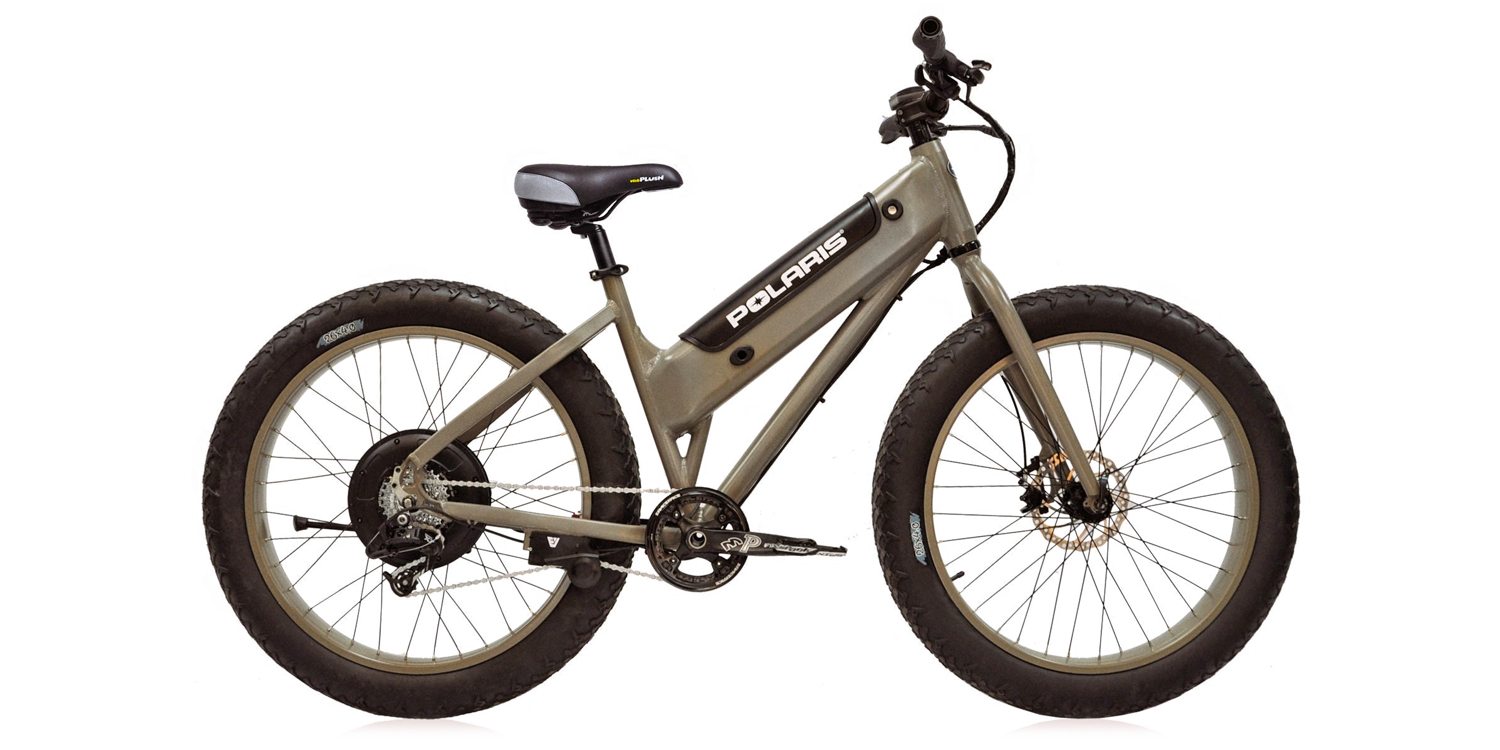
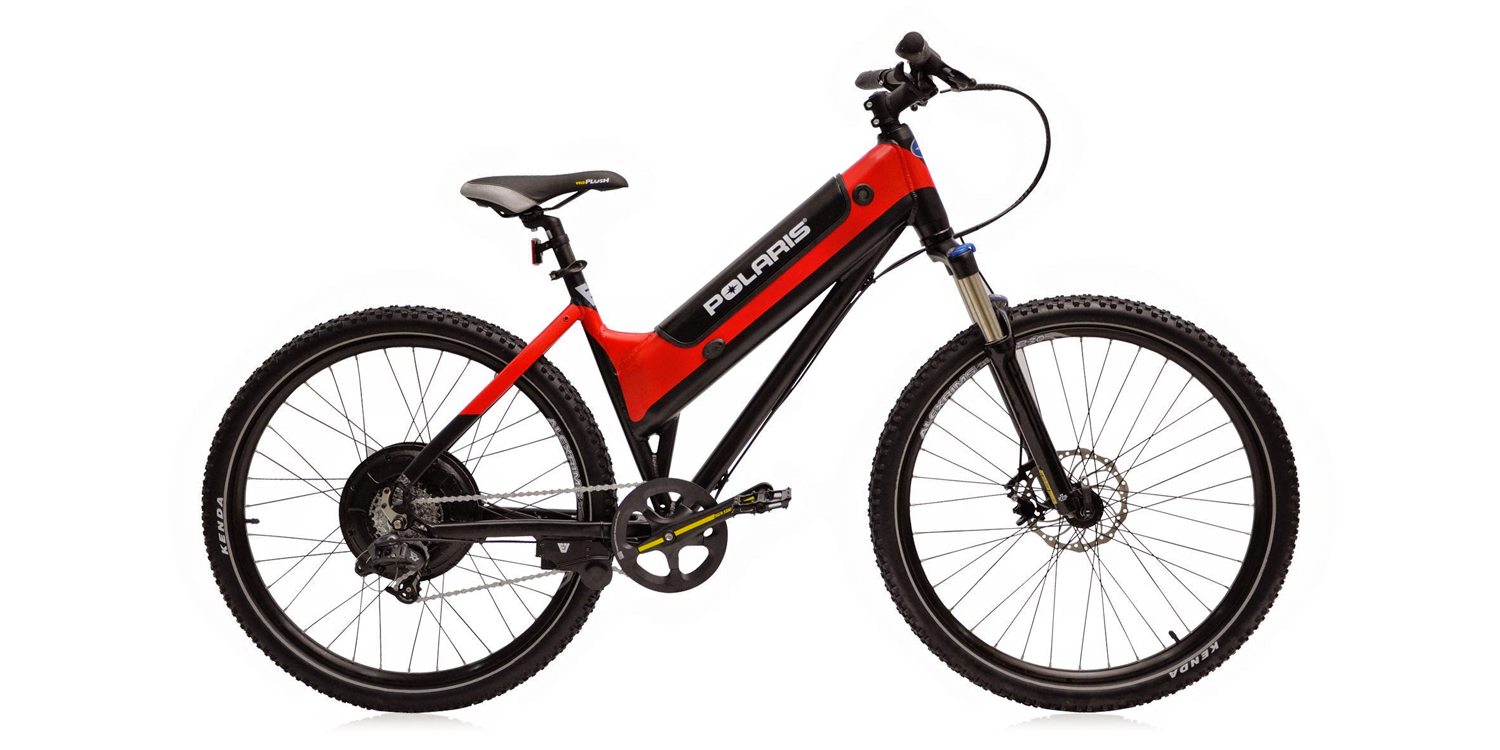
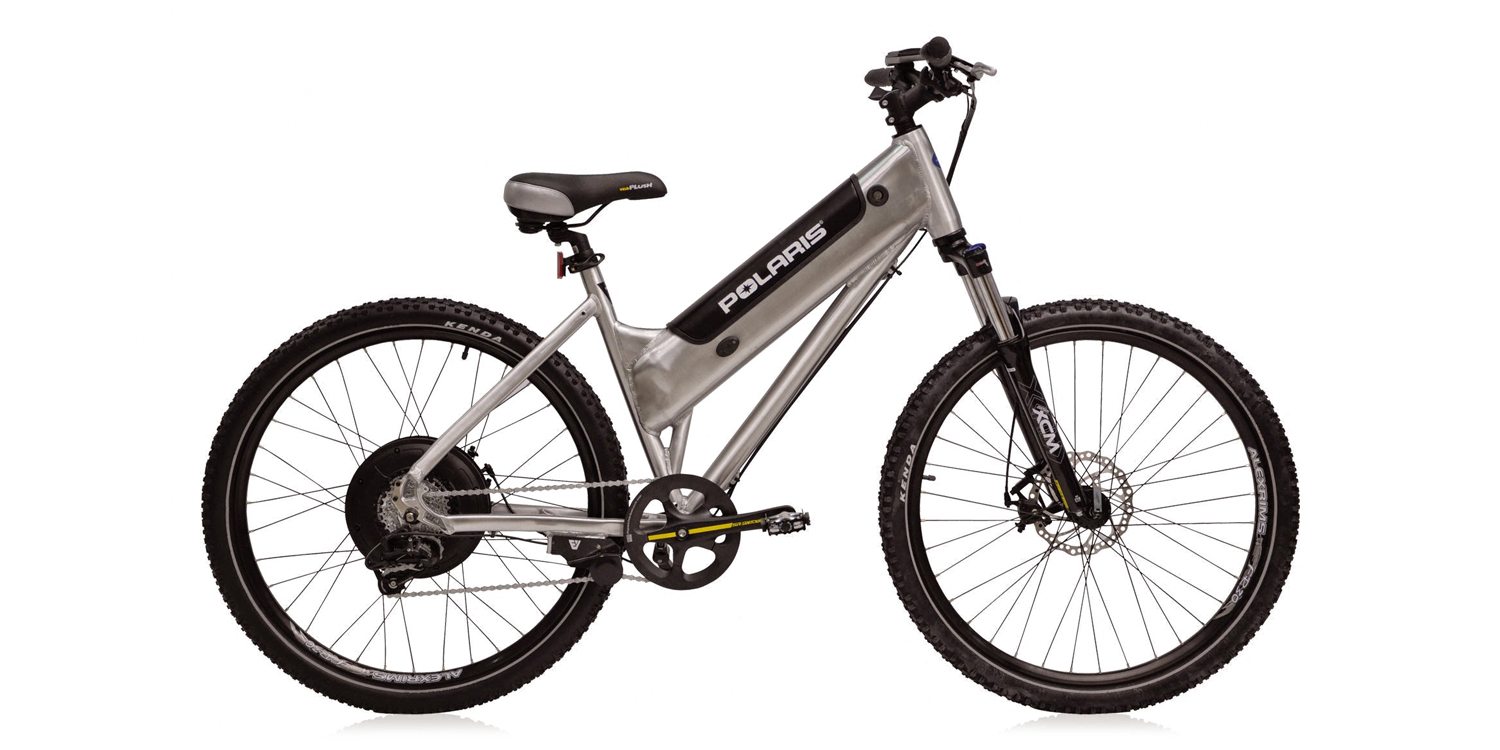
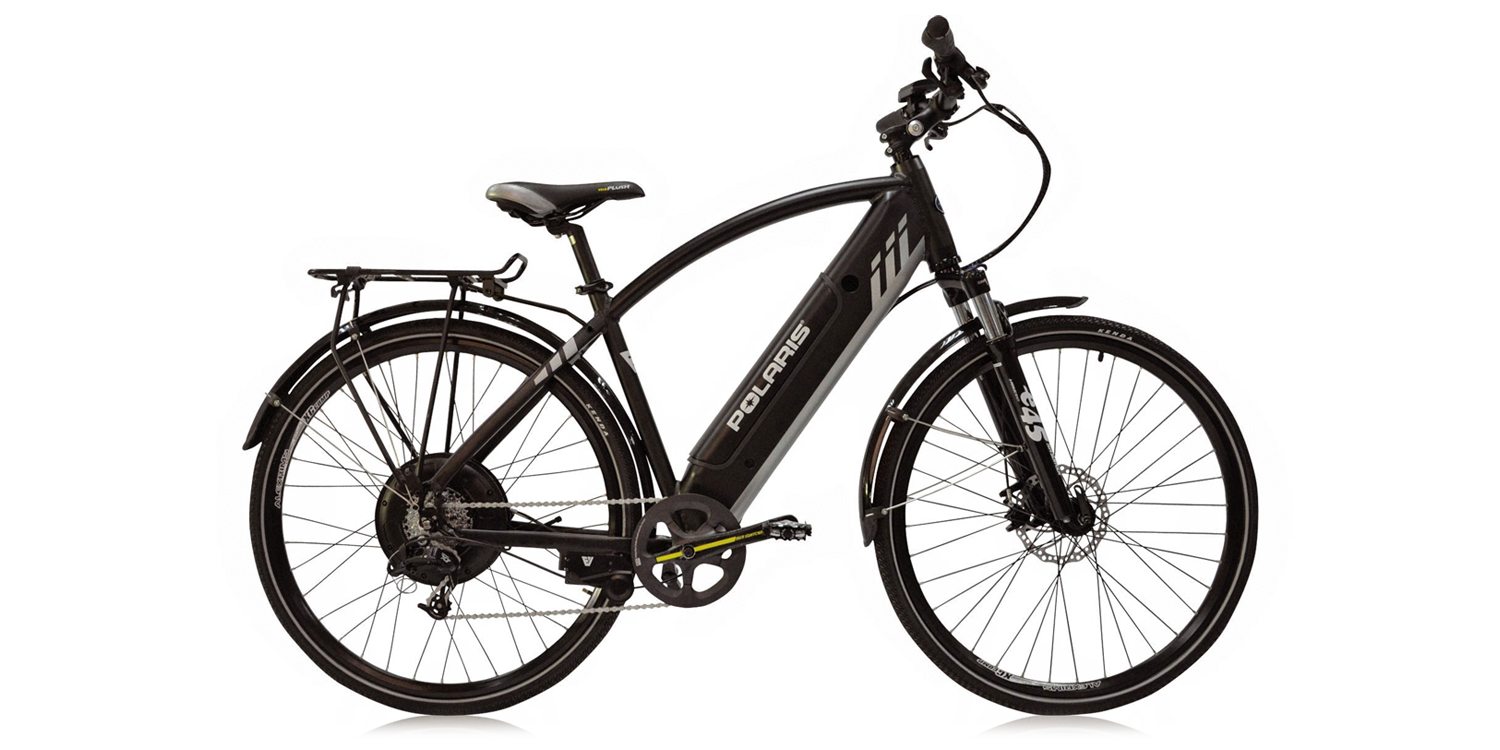
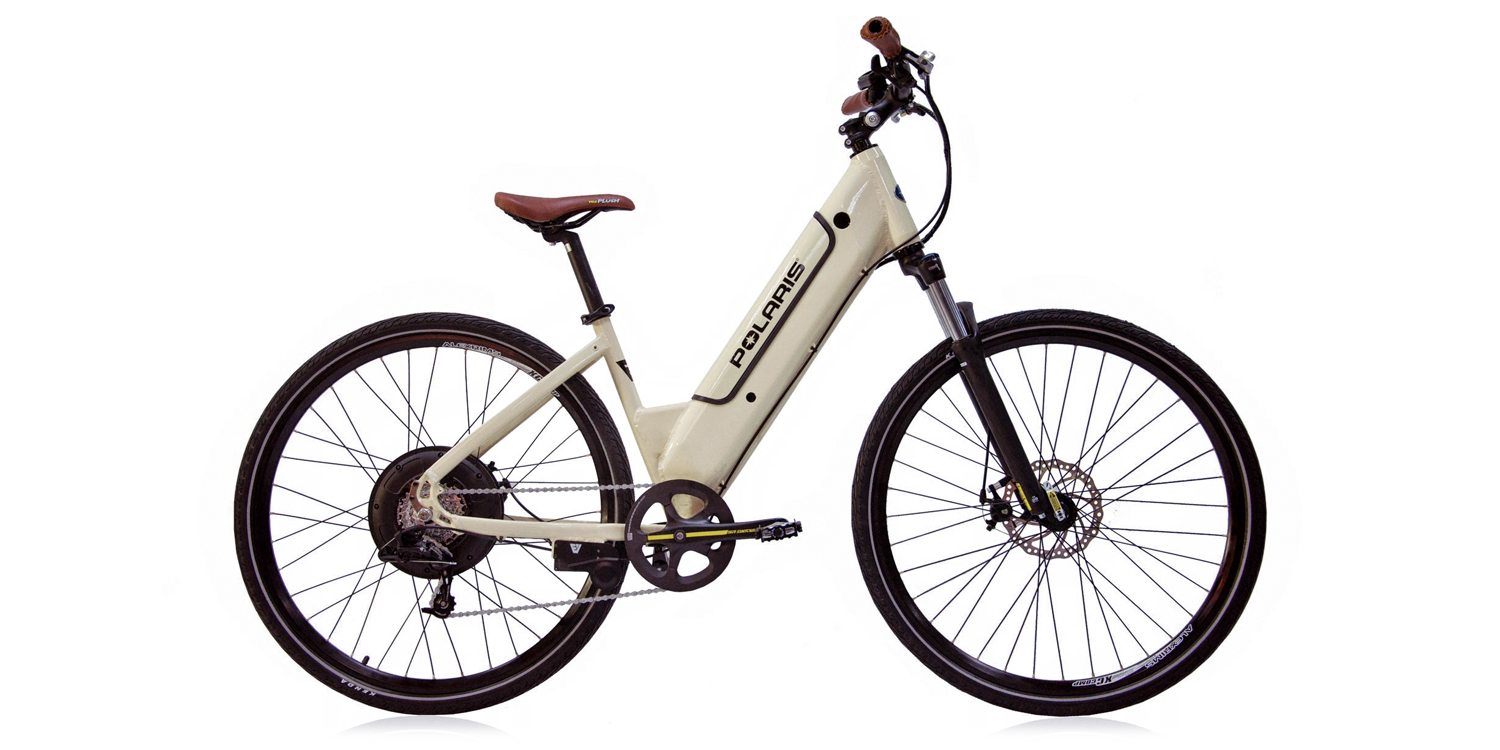
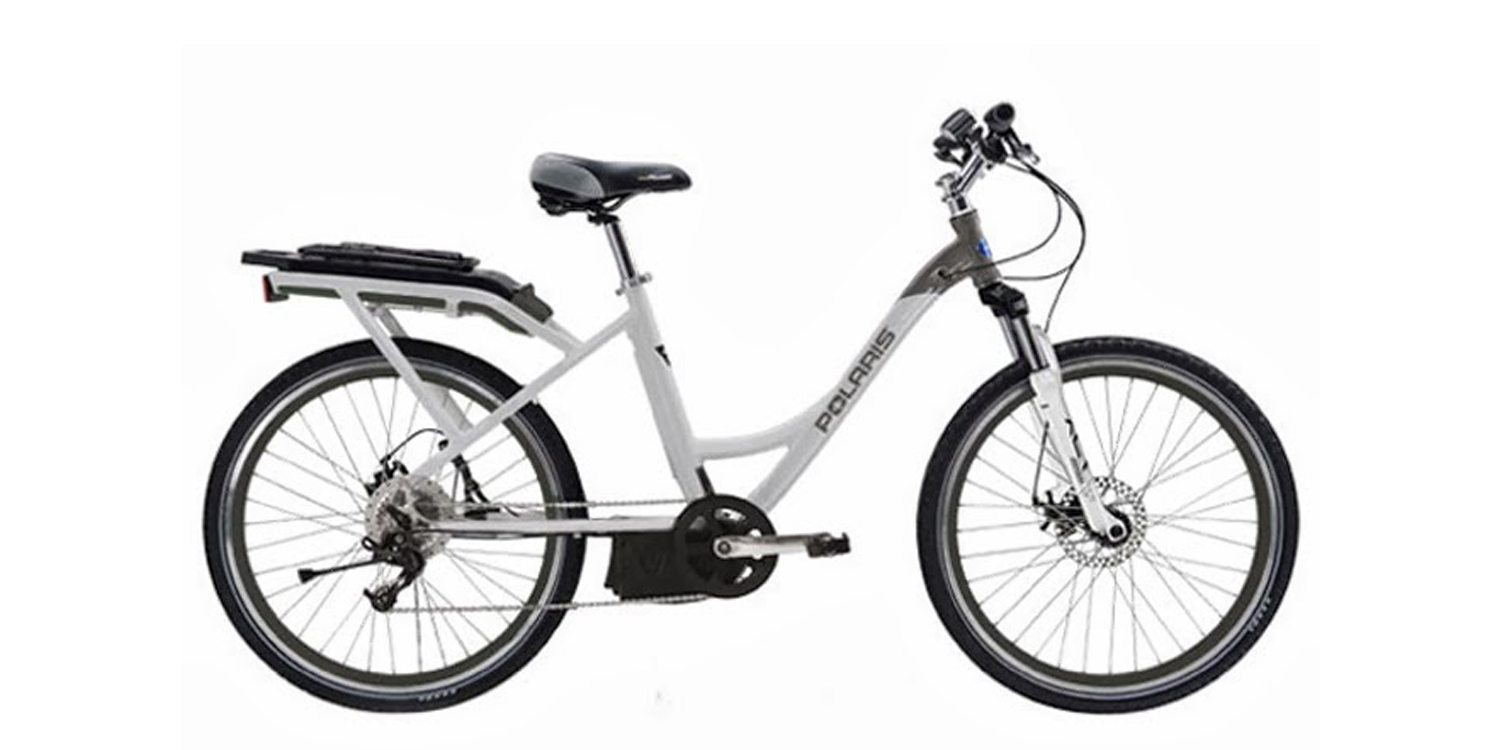
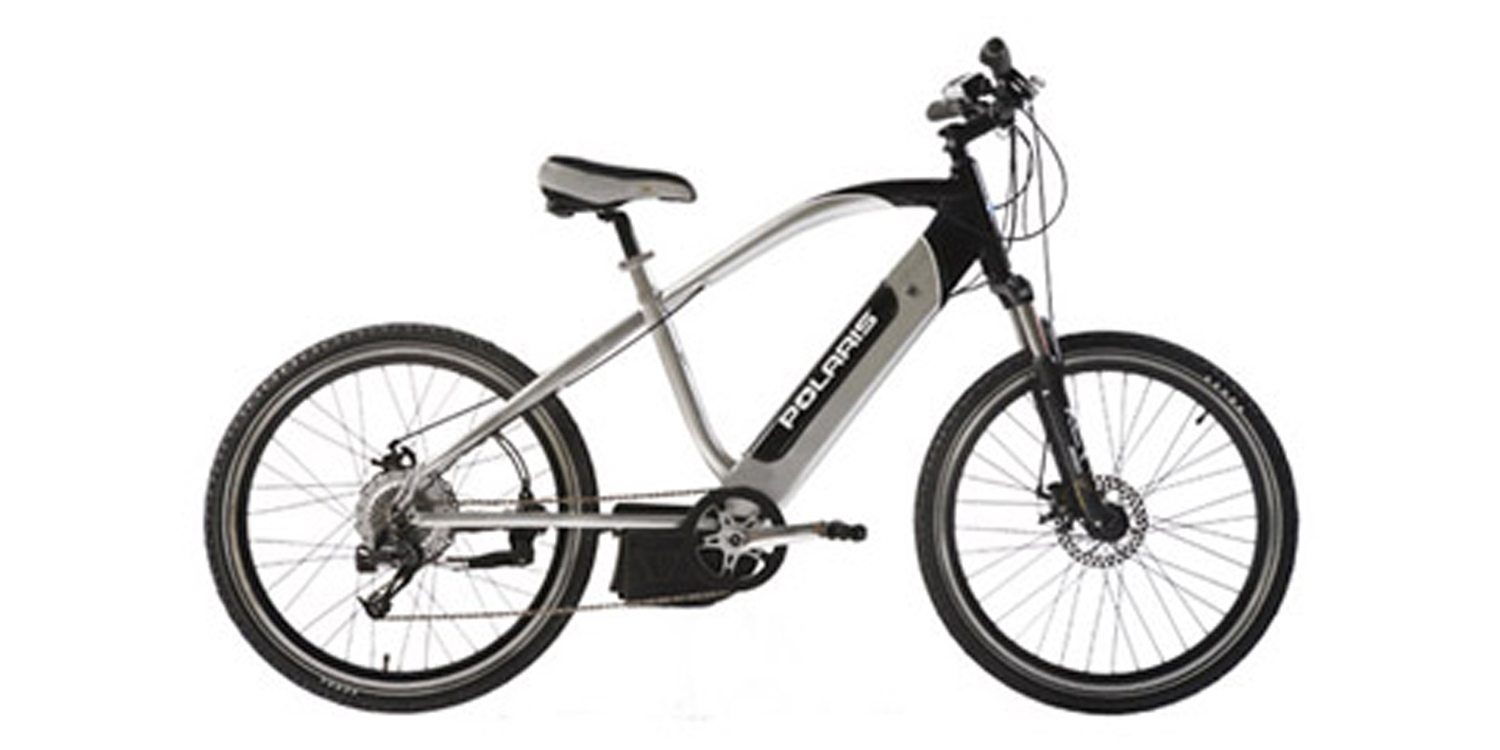
Barnaby says
Can you summarize why you rated this as an 8.5 vs. the 10 for the IZIP E3 Path+? I bought the IZIP E3 Path+ and have had 2 motors fail, so I’m thinking about exchanging it and see the Polaris as a comparable bike.
Court Rye says
I wasn’t super impressed with the way the motor felt, it wasn’t as zippy or smooth and intuitive as the Path+. I have also seen Currie do a solid job of customer service over the years (but am aware of some issues with 2014 Dash and Path+ models with magnets coming loose). Give the Polaris a try, you might be able to get a great deal and I realize my score seems off given the similar weight and the better distribution of that weight on the Course. Maybe the Path+ should be rated lower but I’m not sure I would raise the Course much higher.
Barnaby says
Thanks! I really appreciate the thoughtfulness you put into reviews. Great site!